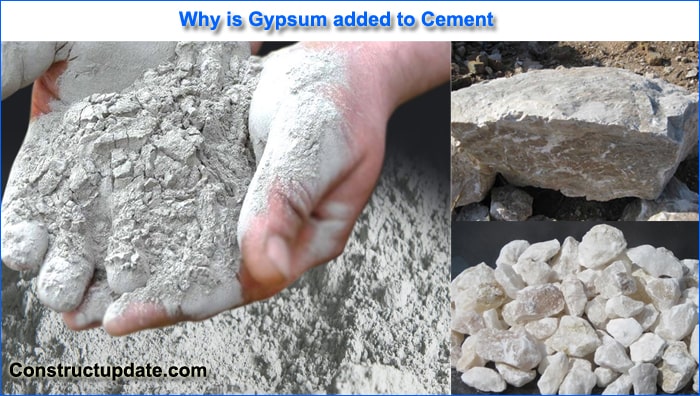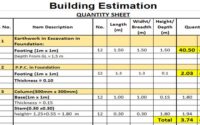What is Gypsum | Why Gypsum Added to Cement | Uses of Gypsum | Properties of Gypsum
Gypsum is a typical sulphate mineral made up of hydrated calcium sulphate (CaSO4 2H2O), which has tremendous industrial relevance. The mineral’s common name in well-developed crystals is selenite. The translucent and opalescent big fibrous type, also known as satin spar, has a silky sheen and is prized for ornaments and jewellery. When natural and translucent, the fine-grained large variant known as alabaster is cut and polished for sculptural and decorative purposes. Gypsite is a pulverulent, earthy kind. In this detailed article, we will try to learn why gypsum is added to cement.

What is Gypsum?
A soft sulphate mineral called gypsum is made up of calcium sulphate dihydrate. It is mined all over the world and has a wide range of applications, including those for fertiliser, building materials, architectural and sculpture projects, pharmaceuticals, and food additives. From the point of extraction during the mining process to the point of usage following processing, it plays a significant role in the Canadian economy. Today, Nova Scotia is the base of almost 75% of Canada’s gypsum output. British Columbia, Ontario, and Manitoba all generate minor amounts as well.
Uses of Gypsum in Construction
Due to its wide range of applications in the construction sector, gypsum has long been regarded as the “wonder mineral.” Wallboards used to cover walls and ceilings are frequently made using gypsum. Additionally, it is combined with a patching compound to fix wallboard and used to manufacture plaster, which is employed in the construction of homes. In addition to concrete blocks, gypsum blocks are also available for use in construction. Additionally, it serves as a Portland cement additive that inhibits concrete from setting too quickly.
Other uses of Gypsum
- It has a number of manufacturing, industrial, and agricultural applications.
- Gypsum is also employed as a substance that resists fire.
- It’s employed to make plaster of paris.
- It is used as a fluxing agent.
Properties of Gypsum
- Crystalline minerals that are clear, translucent, and without colour.
- It can have the colour white, grey, yellow, or blue.
- With the aid of a figure, it may be broken down and is soft in nature.
- Its thermal conductivity is modest.
Why is gypsum added to concrete? Gypsum’s function in cement
Gypsum is a key component in regulating how quickly cement hardens. During the final grinding stage of the cement-making process, a little amount of gypsum is added after the clinker has cooled. Cement is controlled by gypsum; without it, the cement will be set up too quickly to allow for the placement of concrete.
Four key components are mixed to create cement. They are tetra calcium aluminium ferrite, di-calcium silicate, tri-calcium aluminate, and tri-calcium silicate. To prepare the cement, these ingredients are offered in a certain proportion.
When Gypsum is added to cement?
We are aware that clinkers are created throughout the cement-making process. After cooling, a small amount of gypsum is applied to these cement clinkers.
The last grinding stage for regular Portland cement is where the mixture is sent after that. It stays between three and four percent, and for quick-setting cement, it can be as low as 2.5 percent.
Effects of gypsum on the cement
- By quickening the rate of hydration, it reduces the time required for cement to set.
- Gypsum functions as a coolant and reduces the heat of hydration when water and cement are combined. Sulfates get to react and emit some heat during this process.
- Gypsum aids in lengthening the time required for tasks like mixing, laying, and transporting concrete during the concreting process.
- Comparing gypsum cement to non-gypsum cement reveals that gypsum cement has significantly higher strength and hardness.
- Gypsum-containing cement uses less water than cement without gypsum.




